Art World
Tiffany & Co. Makes a Big Splash in China With a Magnificent Show of Its Greatest Hits
The sprawling exhibition illustrates how brand storytelling is more important than ever.
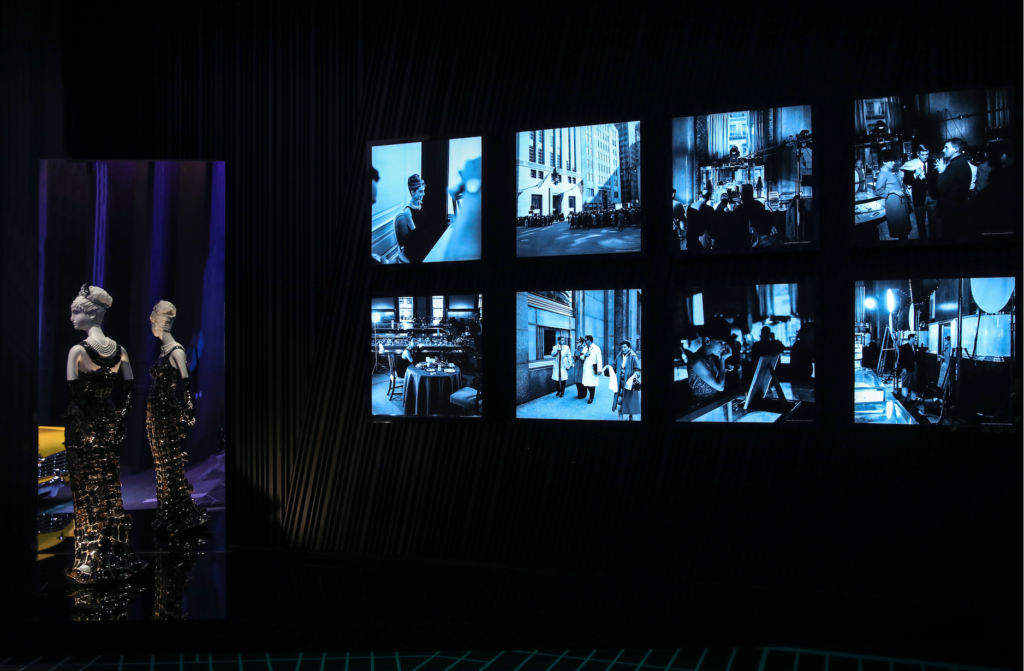
The sprawling exhibition illustrates how brand storytelling is more important than ever.

Noor Brara

At the Fosun Art Foundation in Shanghai last week, Tiffany & Co. opened a new exhibition titled “Vision and Virtuosity,” a retrospective of the brand’s greatest jewelry hits since its inception in 1837 and its largest show to date.
Three hundred iconic pieces, sourced primarily from the Tiffany archives, are on display, alongside memorabilia contextualizing each within the larger cultural zeitgeist. Divided amongst six uniquely themed rooms, each of which assumes a floor of its own, the show is planned around a series of “Tiffany firsts,” the well-known, revelatory objects and concepts that the American house has invented over the years.
The Tiffany Blue Book, for example, first launched in 1845, was the US’s first-ever mail-order catalogue, and the Tiffany Setting—the now ubiquitous, six-prong engagement ring—was conceived to maximize a diamond’s brilliance by raising it above the band.
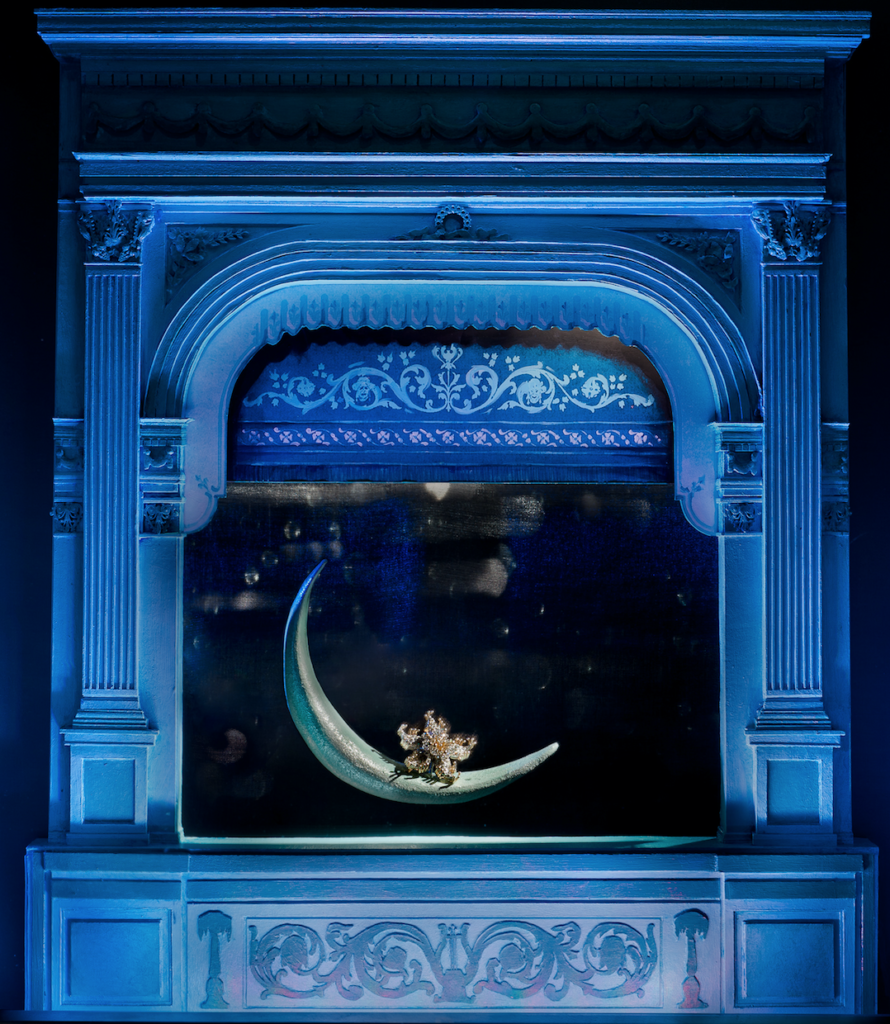
An reimagined archival window from the Tiffany Blue room designed by Robert Rauschenberg and Jasper Johns. Photo courtesy Tiffany & Co.
The house’s Fifth Avenue New York flagship shop, too, serves as its own kind of first, and is reimagined in China in all its 1960’s glory as the setting of Audrey Hepburn’s Breakfast at Tiffany’s, with wraparound murals featuring black-and-white imagery of street views, an actual New York City yellow cab, and a sculpture of Hepburn, whose famous Givenchy-designed little black dress is crafted from pieces of porcelain once owned by China’s earliest ruling dynasty.
Emotion and education—and the opportunity to spread the Tiffany brand into China—comprise, according to the exhibition’s designer, Richard Moore, the point of the show.
At the same time, the move is clearly strategic; there’s no getting around the fact that brand “storytelling” via immersive experiences like this one has become an increasingly effective marketing tool for securing and maintaining a loyal customer base.
As the future of the luxury world extends toward China, where young adults aged 18 to 30 are poised to soon make up two-thirds of the global luxury market, it’s easy to see why Tiffany decided to bring its crown jewels to Shanghai over another city. In many ways—and by the brand’s own admission—China represents the “Vision” part of “Vision & Virtuosity,” and will be a key player in the future of the brand.
“I really think that people need to understand more about the brand, and I think what’s been so fascinating about setting this up is, even for someone who’s worked for the brand for 10 years, you don’t know all of these stories, and you don’t know all of these pieces,” Moore says.

Inside the Blue Book room, where pieces are presented alongside a blue book from the year they were created. Photo courtesy Tiffany & Co.
“When you see them all together in one place that’s been designed and curated to reveal those stories, you learn something,” he adds. “Maybe you even knew whatever it was that you learned, but you’d forgotten about it. I think so many people know Tiffany, in a sense; they know the Tiffany blue and they know about the diamonds. But what are the stories that fill in some of those gaps? Those are the things we want people to understand.”
The Breakfast at Tiffany’s room speaks to this storytelling effort perhaps most keenly. While there is no actual jewelry presented, it offers the most widely accessible cultural and social-media value for visitors, many of whom will no doubt be fans of both the film and its namesake. In addition to the installation setups, there is plenty more to see (and to Instagram), including behind-the-scenes imagery from the film (on display for the first time publicly) as well as original sketches for much of Holly Golightly’s award-winning wardrobe.
Most spectacular of all, though, is Hepburn’s own script, projected digitally onto the back wall: page-by-page, it continually flips to a modern rendition of composer Henry Mancini’s “Moon River,” which was originally performed by Hepburn in the film. Played over loudspeakers, it dances nicely with Hepburn’s script notes, highlighted and marked up in Tiffany blue. A few feet away, footage of Hepburn entering Tiffany’s Fifth Avenue flagship with her soon-to-be love interest, Paul Varjack, rolls. “Isn’t it marvelous?” she muses, gesturing about the ground floor, where shoppers twirl by like whirling dervishes. “Tiffany’s!”

A never-before-seen image of Audrey Hepburn behind the scenes at the Breakfast at Tiffany’s set. Photo courtesy Tiffany & Co.
The nostalgia factor continues into other rooms, too. In the Tiffany Setting room, engagement rings are presented in enormous, round plexiglass cases, sandwiched between plush blue carpeting and a canopy of paper flowers dangling from long “stems” affixed to the ceiling.
While perusing the rings, visitors can also send digital love notes to their friends and family via small screens on the walls. Elsewhere, private rooms with glass doors await guests who can try on engagement rings and take a picture. Interestingly, none of the rings are available for purchase on the spot. But, if inspiration strikes and visitors are particularly keen on buying one, then, well, Tiffany’s will make it happen (and I imagine they already have, several times over).
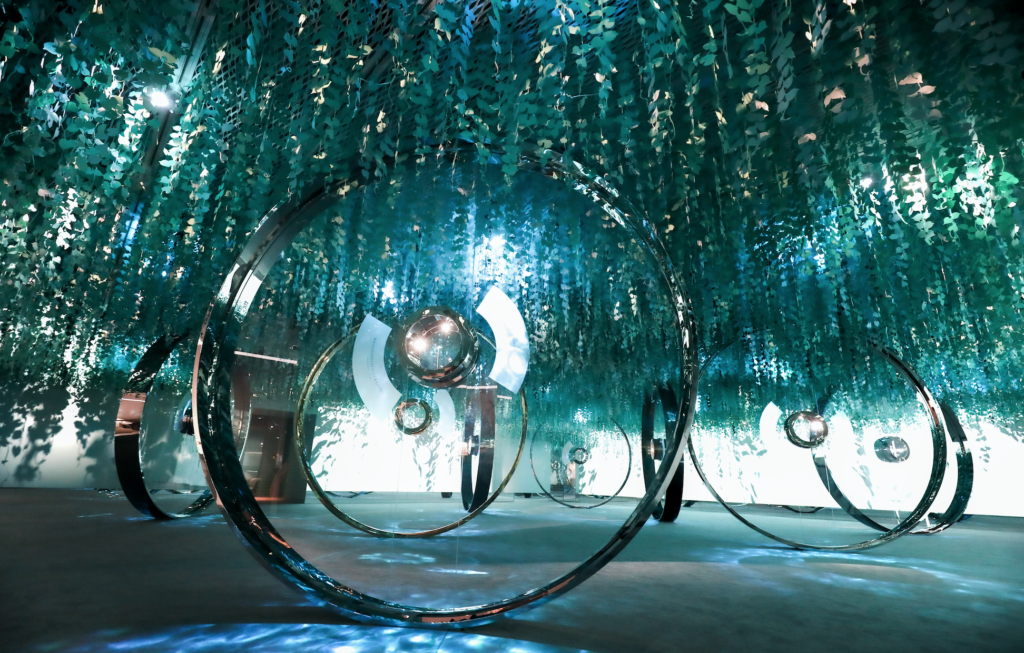
Inside the Tiffany Setting room. Photo courtesy Tiffany & Co.
In many ways, the emphasis is placed squarely on products that are not shoppable, which makes the idea of running to the nearest Tiffany store all the more appealing. And the feeling is no more overwhelming than when you’re standing in the last room, dedicated solely to Tiffany’s most extravagant diamonds.
From the oldest 1800’s-era pieces, to jazz-age bracelets encrusted with pave diamonds and art deco necklaces (one particularly stunning piece is laid upside-down on the décolletage of the wearer, with the entire New York skyline outlined in diamonds), sparkles abound. And with velvety black banquette seating and low lighting, the room feels like a life-size jewelry box one can’t help but ogle, bringing the experience to a starry close.
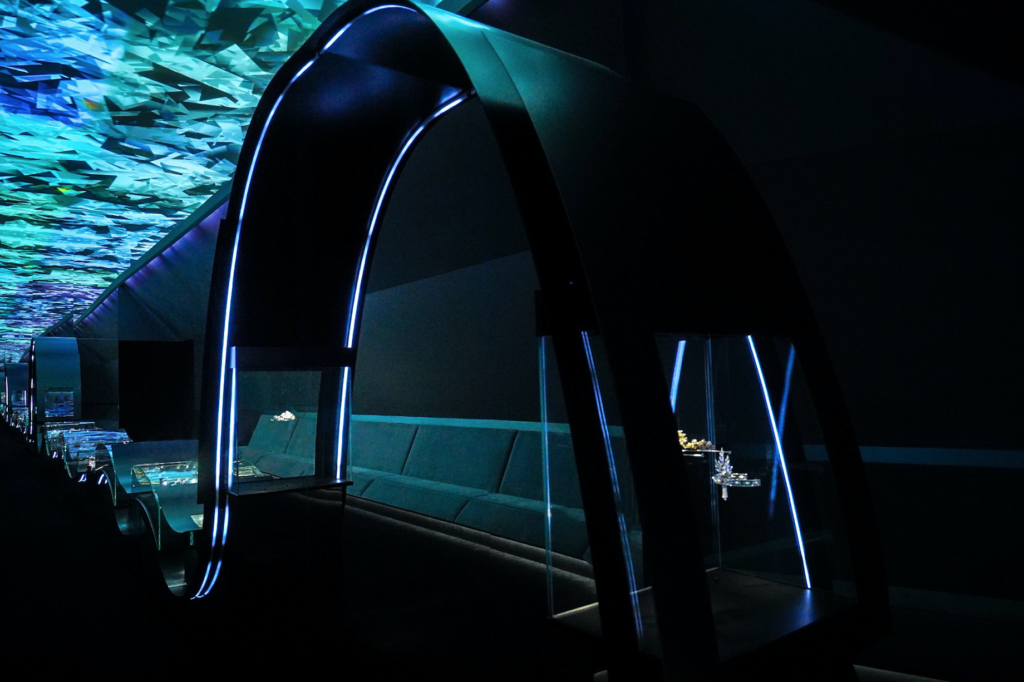
Inside the Diamond Room. Photo courtesy Tiffany & Co.
On the way out, the final piece presents itself, comically, just next to the exit door: the Tiffany Diamond, a whopping 128-carat yellow stone sourced by Tiffany founder Charles Lewis from South Africa’s Kimberly diamond mines.
The piece, worn a total of four times since its discovery in 1877, is the exhibition’s featured object and one of the world’s largest yellow diamonds. It was worn most famously by Audrey Hepburn to the premiere of Breakfast at Tiffany’s in 1961, and most recently by Lady Gaga at the 2019 Academy Awards. Saved for the very end, the diamond is nonetheless easy to forget after viewing the rest of the exhibition—though that may perhaps be the point.
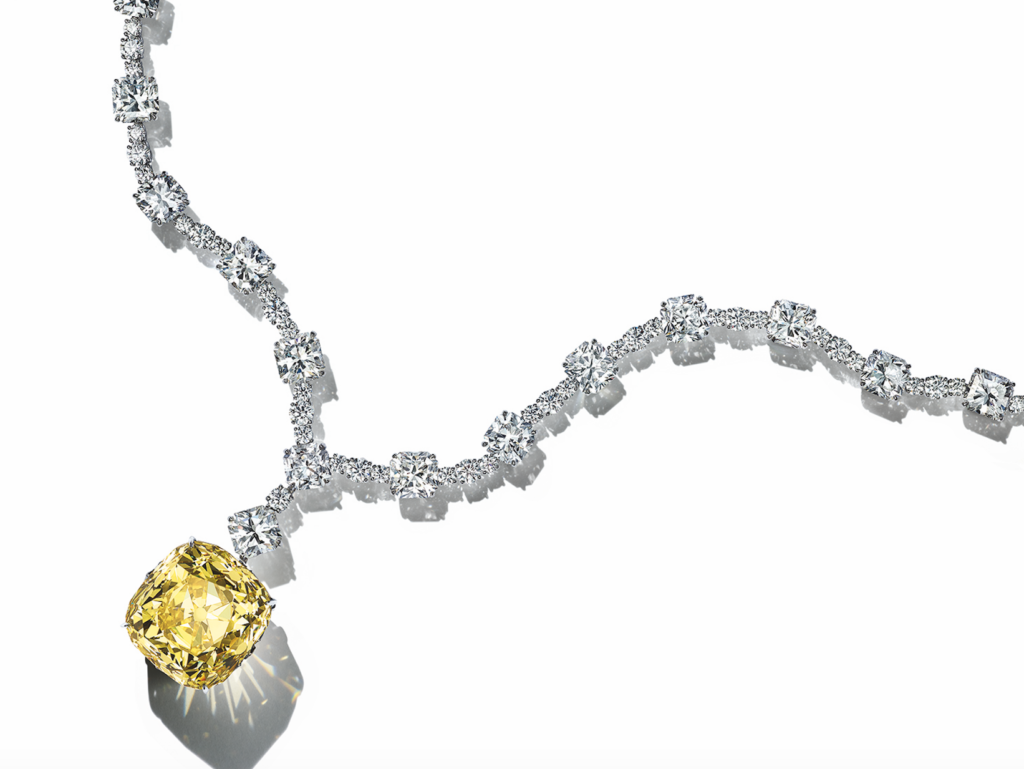
The Tiffany Diamond. Photo courtesy Tiffany & Co.
“We wanted this to be very immersive and very experiential,” Moore says of the way the show builds to a crescendo. “Instead of doing a solely retrospective or historical show, I think it was really important that the cadence between each of the different chapters felt like you were going from one experience to the next.”
“Experience is becoming even more important as the dot-com and digital space grows,” he says. “That’s the one thing you can’t get on that platform, the physical environment. It’s about the people, it’s about how you feel inside, it’s about the senses. The music, the scent, the environment, the chair that you sat in—all of those things help communicate non-verbal queues to a client.”